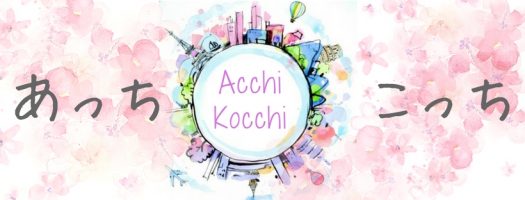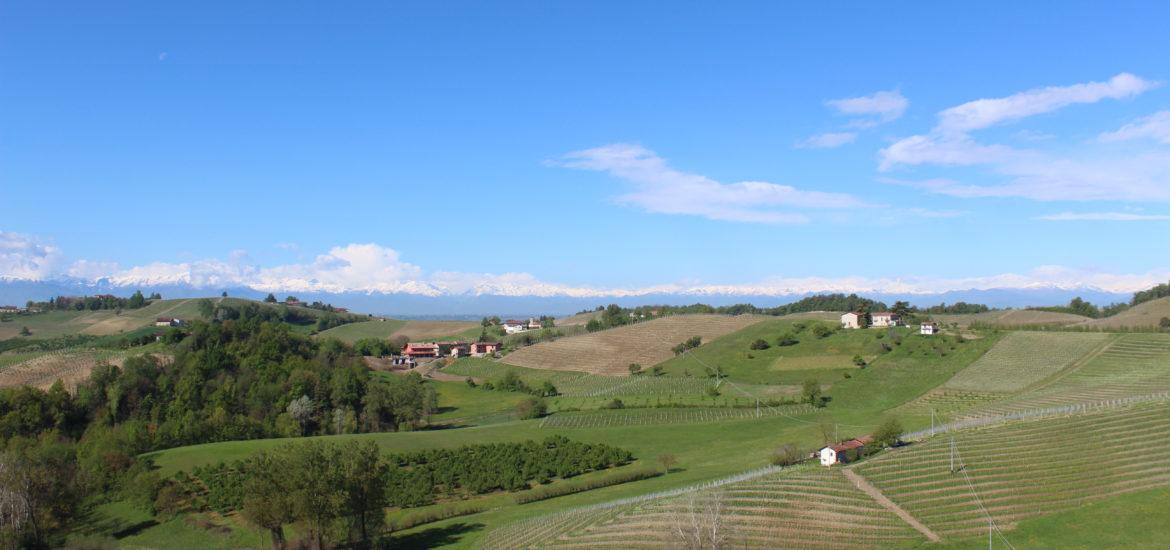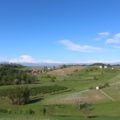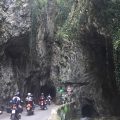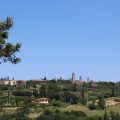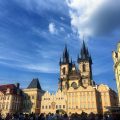(this article is also available in Italian and Japanese)
My eyes are still shining if I think about my 4-days trip in the Italian Langhe, a beautiful hilly area in the region of Piedmont, and inscribed in the UNESCO World Heritage Site. I knew from the first moment: I would have loved it. After all, even when I was working in Japan, my Japanese boss had always told me about Langhe enthusiastically. So, thanks to the long vacation we had in Italy on April 25th, I took the chance and I left, with a suitcase full of expectations and a lot of things to see and do! And now (a bit late, actually), I am here to suggest you what to see and do for 4 days in Langhe!
What to see and do for 4 days in Langhe
What I have understood abou Langhe is that wherever you go, there will be always something exciting to see and do. I must be honest. It’s quite difficult see all the things the Langhe can offer in just a weekend or even 3 or 4 days, but still it is not impossible.
My base was in Dogliani, a small town on the edge between Bassa and Alta Langa, the two main areas that compose the Langhe. I decided to focus each day on one single area . The Langhe aren’t so wide indeed: it takes around 40-50 minutes by car to travel from the north to the south. My means of transport has been the car, but I think that car or bike are perfect as well!
Dogliani
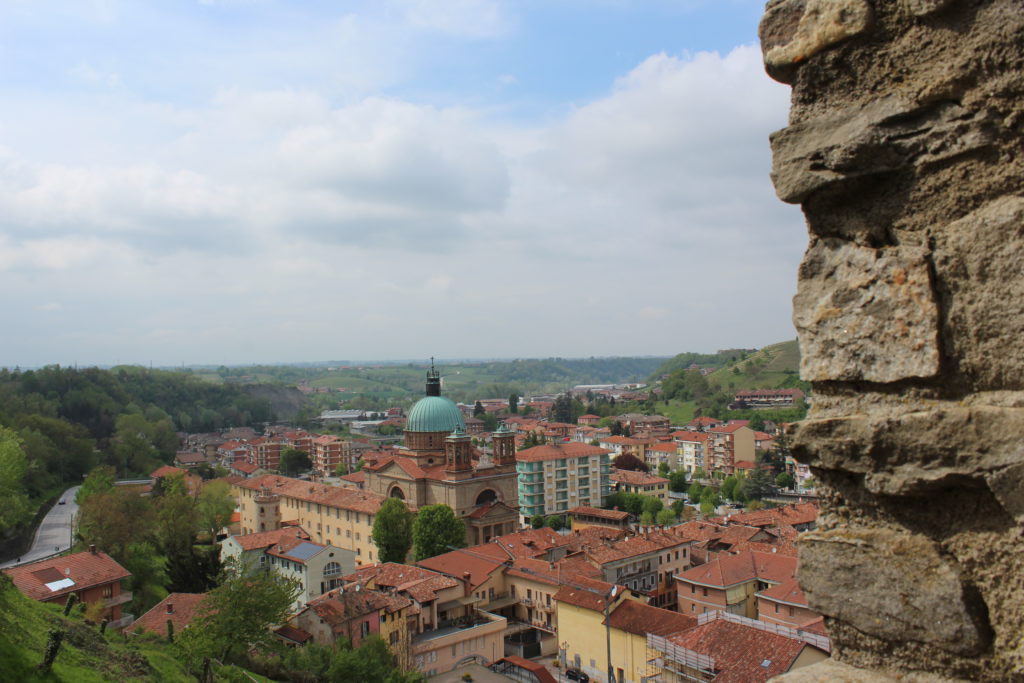
As I wrote before, my travel through the Langhe have started from Dogliani, a very small town in the Bassa Langa. This town is very famous for the Dolcetto di Dogliani, a red wind produced here, and for the Festival of the Television, held every year, at the beginning of May.
Dogliani is basically divided into two areas: the lower and newest area and the upper and oldest one.
In the lower Dogliani you can visit the majestic Parish Church of Saints Quirico and Paul. Next to the Church you can also visit the Musuem dedicated to Luigi Einaudi, the Italian economist and President of Italy between 1949 and 1955, born and raised in Dogliani.
A 10-minutes walk and I soon reach the upper city, where I am immediately fashinated by the façiades of the houses made with red bricks and adorned with wisteria. Aren’t they cute?
In the upper area you can also find the panoramic viewpoint and one of the Big Benches located throughout the Langhe, Roero and Monferrato. These Big Benches are part of a amazing project called “The Big Bench Community Project“, by Chris Bangle and his wife Catherine. A wonderful idea, that made me become child again and have allowed me to see the world from a different point of view!
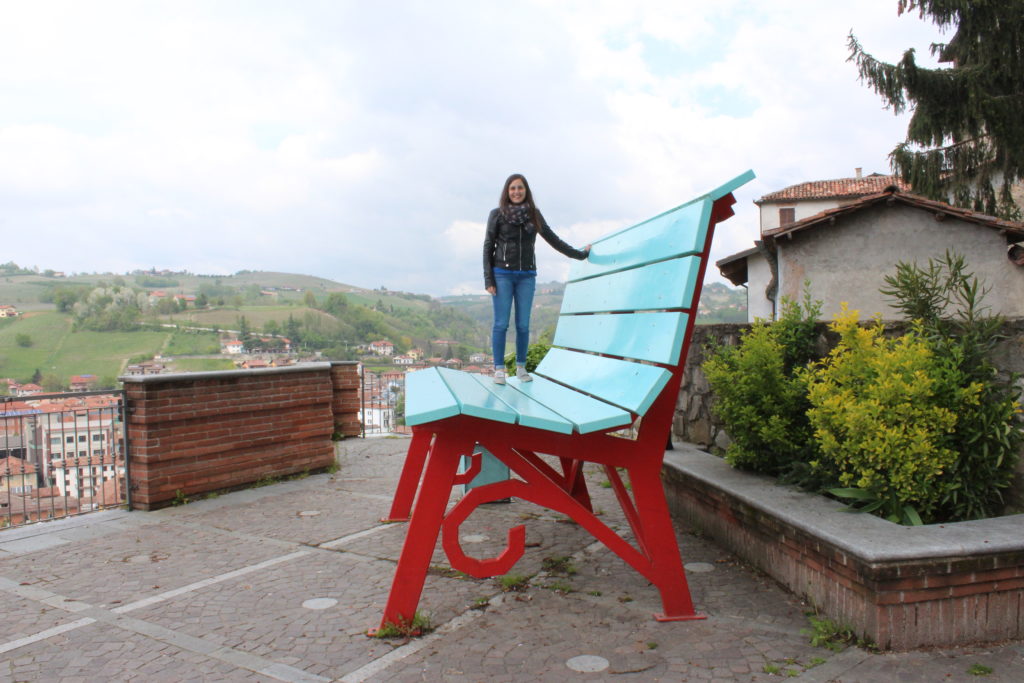
Now, it’s time to go to my b&b for the next days! I stayed at Casa Pecchenino.
What to see and do in Langhe: Bassa Langa
La Morra
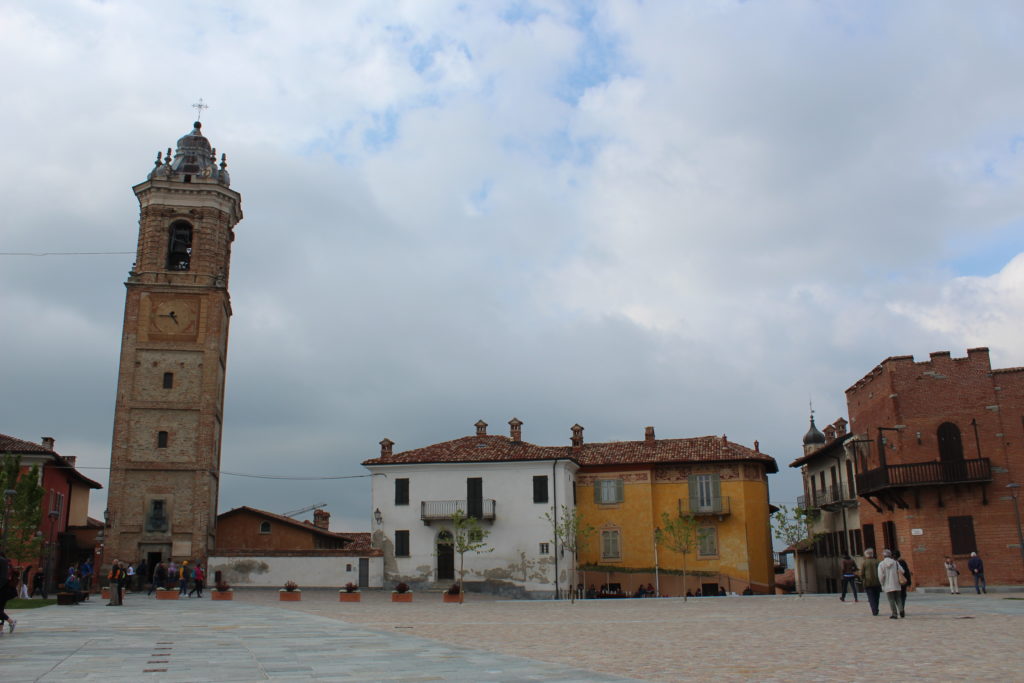
La Morra is probably the village I loved the most. The view from here is breathtaking (the weather wasn’t so good though!), and the narrow alleys are very very typical. In La Morra you will find the Cappella delle Brunate, also known as the Barolo Chapel. A triumph of colors in the middle of the vineyard. A super instagramable place!
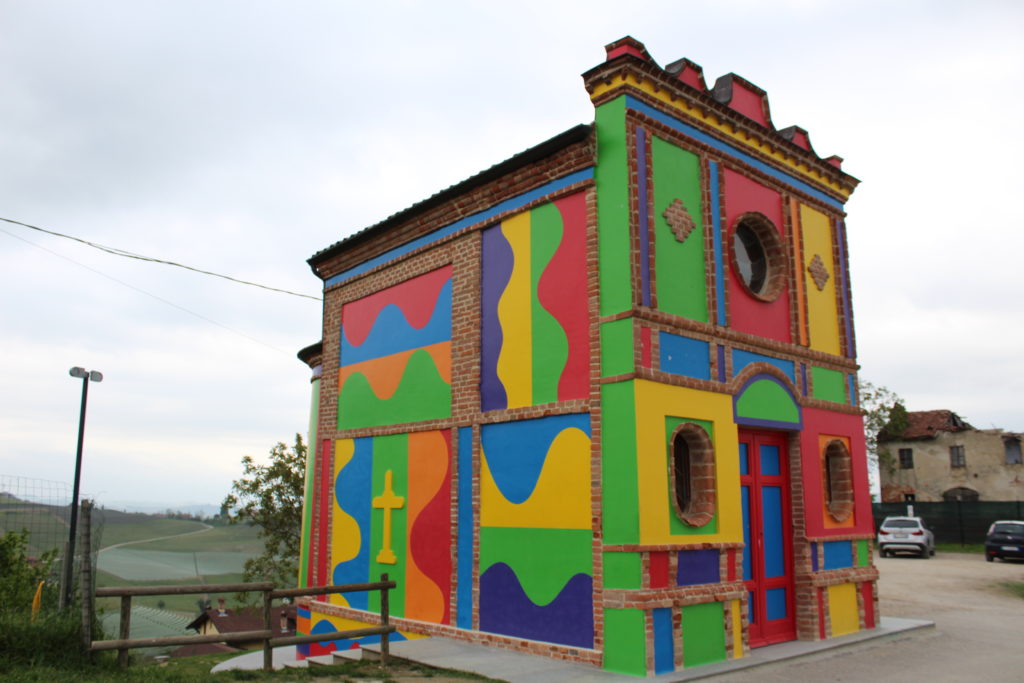
Then, here you will find also another Big Bench of the “Big Bench Community Project”, where I spent over half an hour!
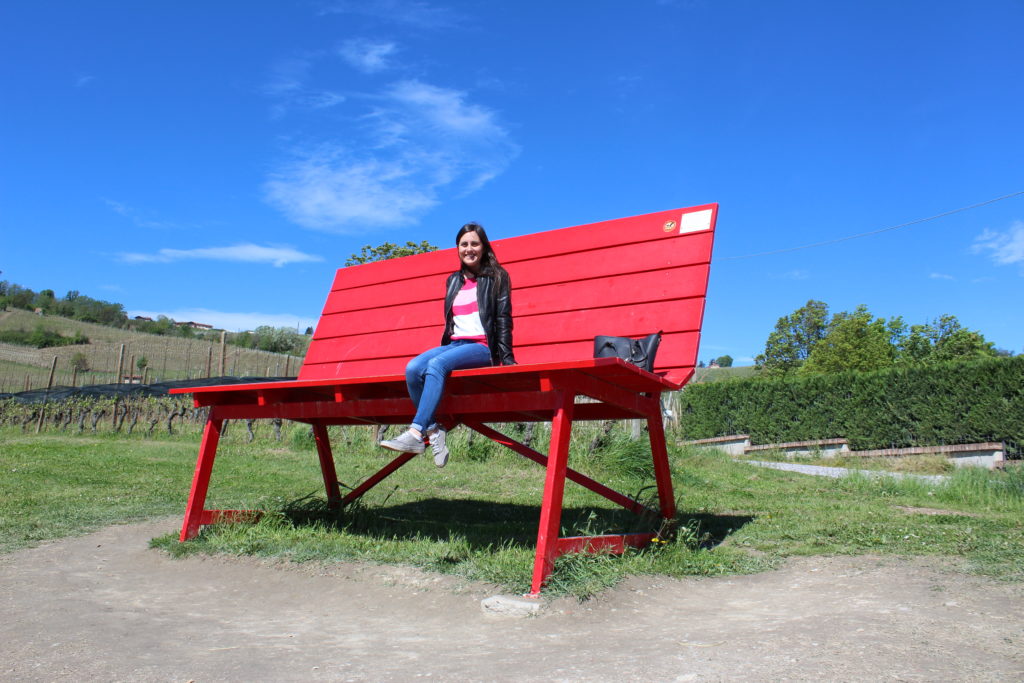
Barolo
The DOCG wine produced in this town is undoubtedly drunk all over the world and that’s why this town is probably one of the most touristic in the Langhe area, after Alba. It’s also well explained by our difficulty to park the car!
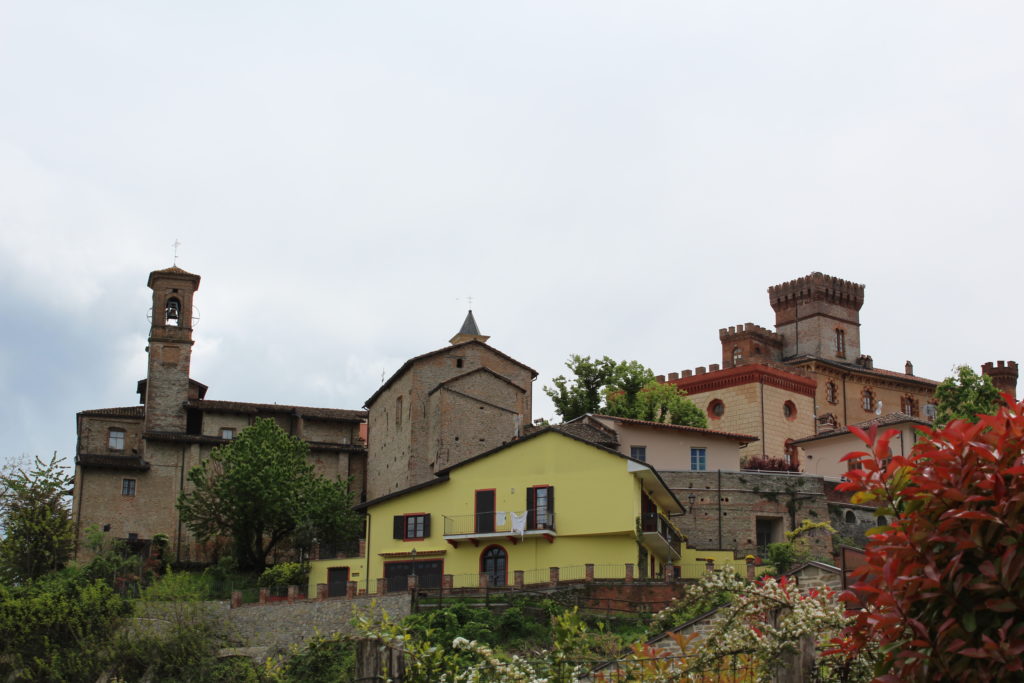
In Barolo, the main attraction is the Museum of Wine WIMU. The ticket is 8€, but I highly recommend a visit, especially if you’re travelling with kids. It isn’t boring at all; rather it’s very interactive and fun.
The visit ends in the wine cellar, where you can buy and taste local wines. However, I didn’t and I continued my visit of the town.
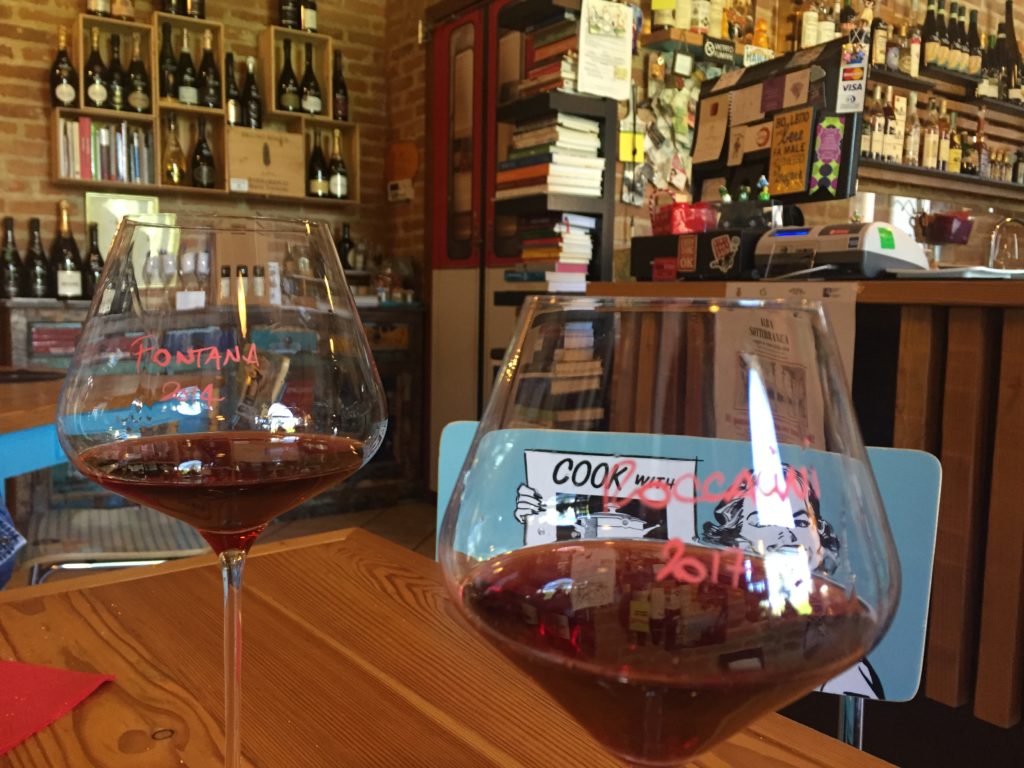
Instead, around 12 a.m., I moved a bit away from the town centre to drink a glass of wine and chill out. I choose to stop at Enotaca La Vite Turchese, because they have a bunch of very good bottles of wine and the waiters are very experienced! I recommend it for an aperitif!
Barbaresco
I imagined Barbaresco much bigger. However, it’s a very beautiful gem. I ended up here on Saturday morning, luckly when the weather was wonderfully perfect.
The Barbaresco city tower is the main attraction here, and it’s the highest and strongest in Piedmont region. 36 meters of history, restored by the municipality, it’s dedicated to Sir Domizio Cavazza, the one who gave the name “Barbaresco” to the local Nebbiolo wine.
You’ll reach the ticked office through a panoramic elevator made of glass (really unaesthetic, in my opinion!). The ticket is 5€. At the first floor, some screens tell about the history of the tower and about famous people who lived in Barbaresco. At the second floor, there is a sensory room used during some special events. Then, at thethrid floor, the panoramic viewpoint, where you have a 360° view on the Langhe! If you like, you can also have a glass of wine here.
Neive
Neive is one of the most beautiful village in Italy (Borgo più bello d’Italia). It consists of a web of narrow paved lanes up to the Clock Tower.
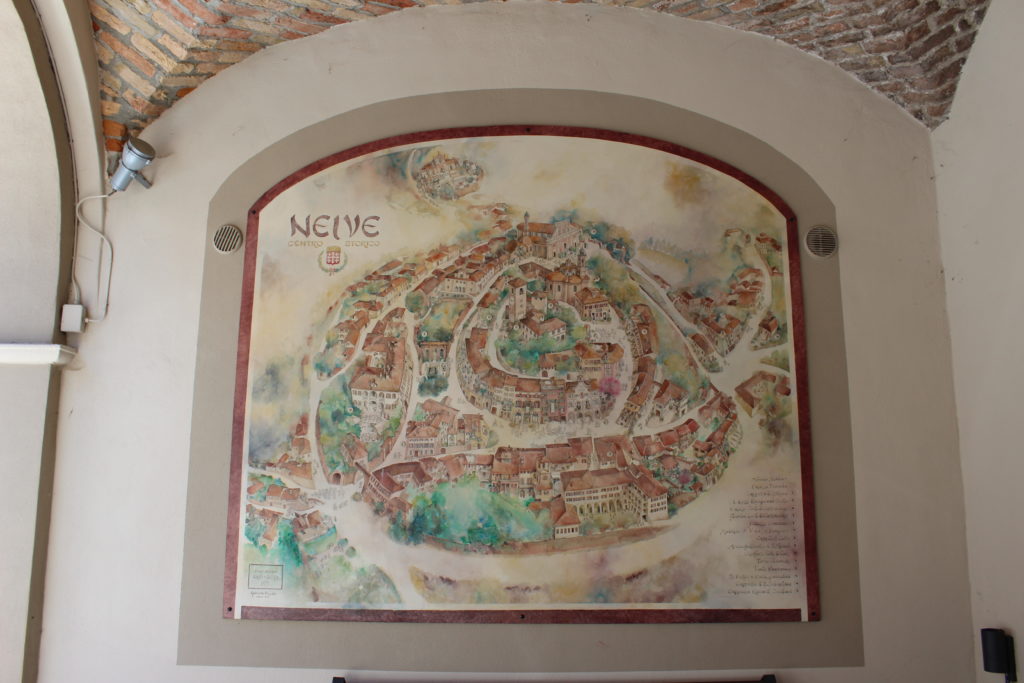
Probably, because of the hot weather at midday, I couldn’t enjoy the town. I didn’t like it so much indeed.
Coazzolo
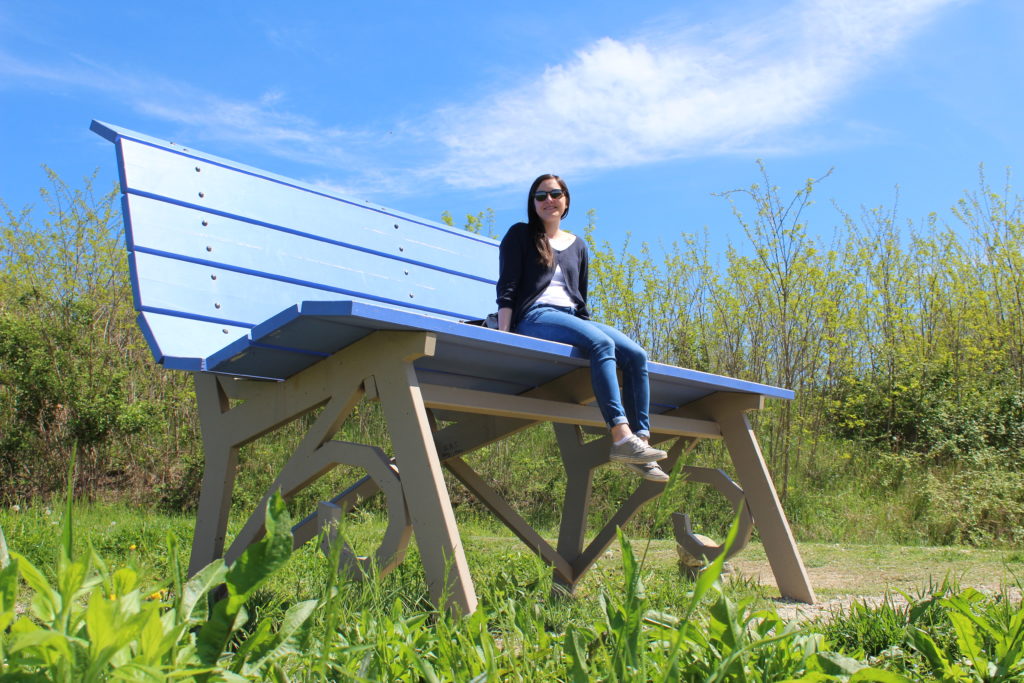
After a brief stop in Neive, I moved to Coazzolo, basically for two reasons: here there is another of the Big Benches and the Vigna dei Pastelli (The Vineyard of Pastels).
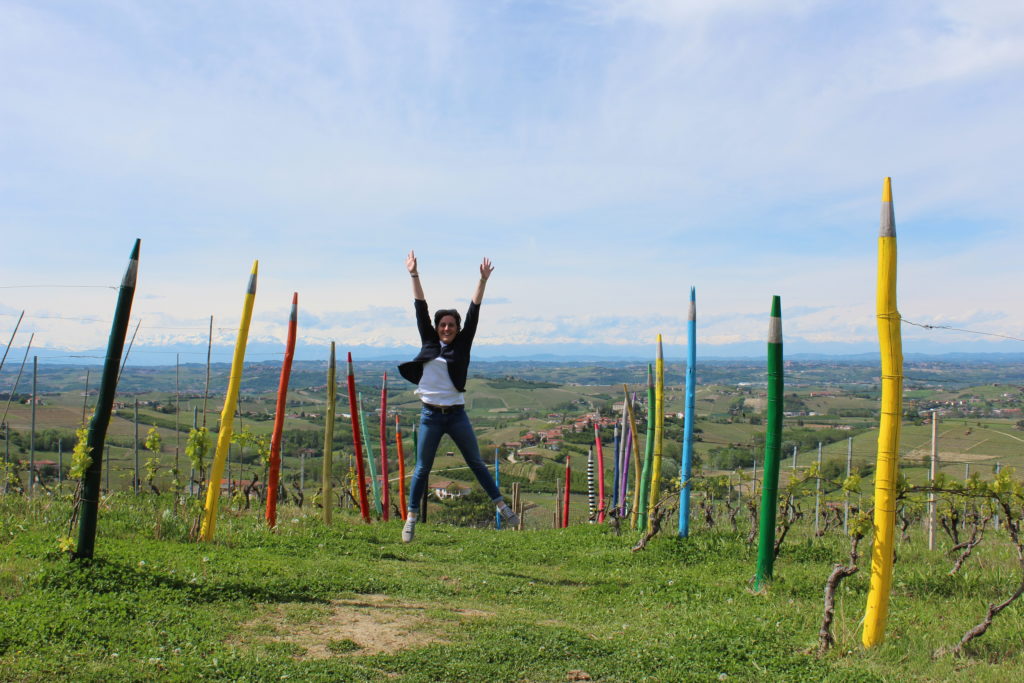
The Vineyard of Pastels is one of the most instagramable spot in the Langhe area. Thanks to the directions of a farmer there, I could reached the spot, because, unfortunately, the directions on Google Maps are wrong. As soon as you see a few giant pastels on the way, you should walk ahead into the vineyards for about 10 minutes. On the top of the hill, you’ll see much more giant pastels and a small table and bench. I stopped here for more then an hour!
What to see and do in Langhe: Alta Langa
The Alta Langa wasn’t in my itinerary at first, but, as the owner of the b&b where I stayed suggested me, I decided to visit the area as well. Unfotunately, the weather was bad and in the evening it rained and hail. So, I couldn’t visited the town of Murazzano and Monforte d’Alba, one of the most beautiful village of Italy.
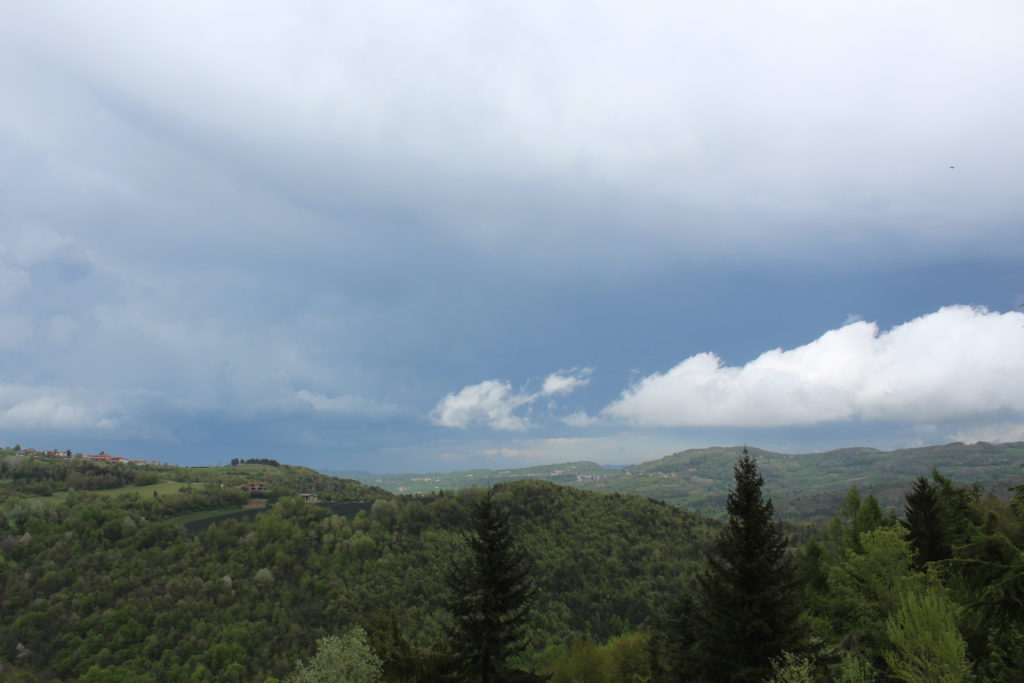
The landscape of the Alta Langa is far way different from the one of the Bassa Langa. Here the nature is more wild and wooded: you’ll not see any vineyard, but hezelnut trees everywhere!
Bossolasco
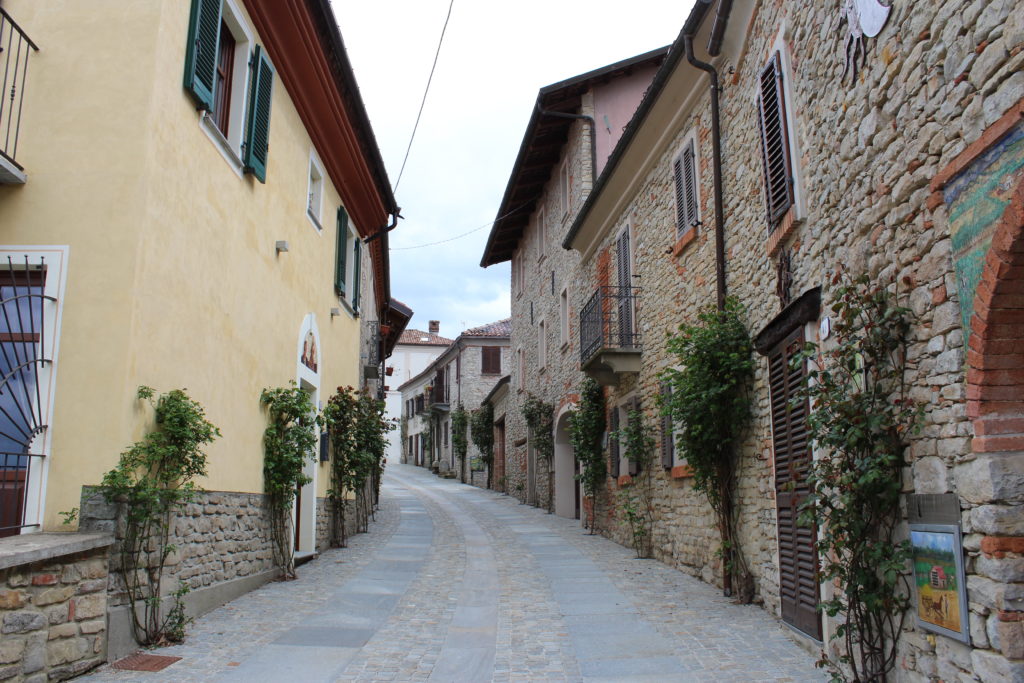
Bossolasco is wonderful. It is also known as “the town of the roses“, because rose trees grow next to the house entrances. I can’t imagine how beautiful this town would be during rose blooming and their contrast with the red bricks of the faciades!
The Local Organization, then, has begun a project to decorate the town: they painted the metal covers of the energy meter telling the farmer daily life of the town.
In the town square, the Angel of the Alta Langa stands out. It’s a statue made by a local artist in memory of a group of Jewish people, that, during the Second World War, found protection in Bossolasco.
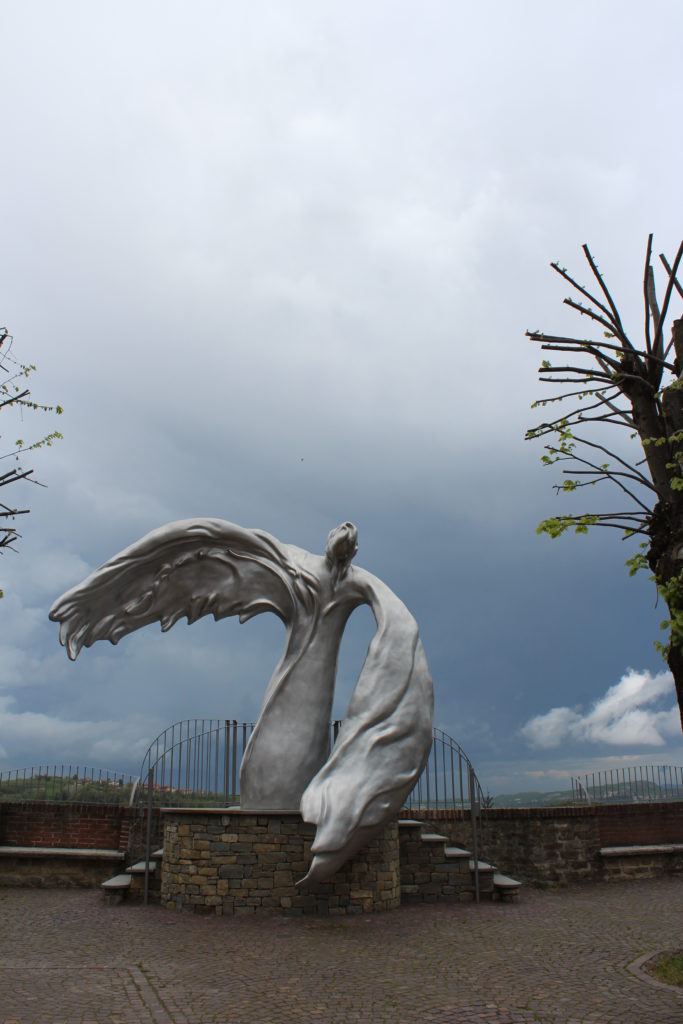
Finally, in Bossolasco there is bakery, fomous all over the Langhe: pasticceria Truffa. Their hezelnut cake is delicious!
Hit-and-run in Alba
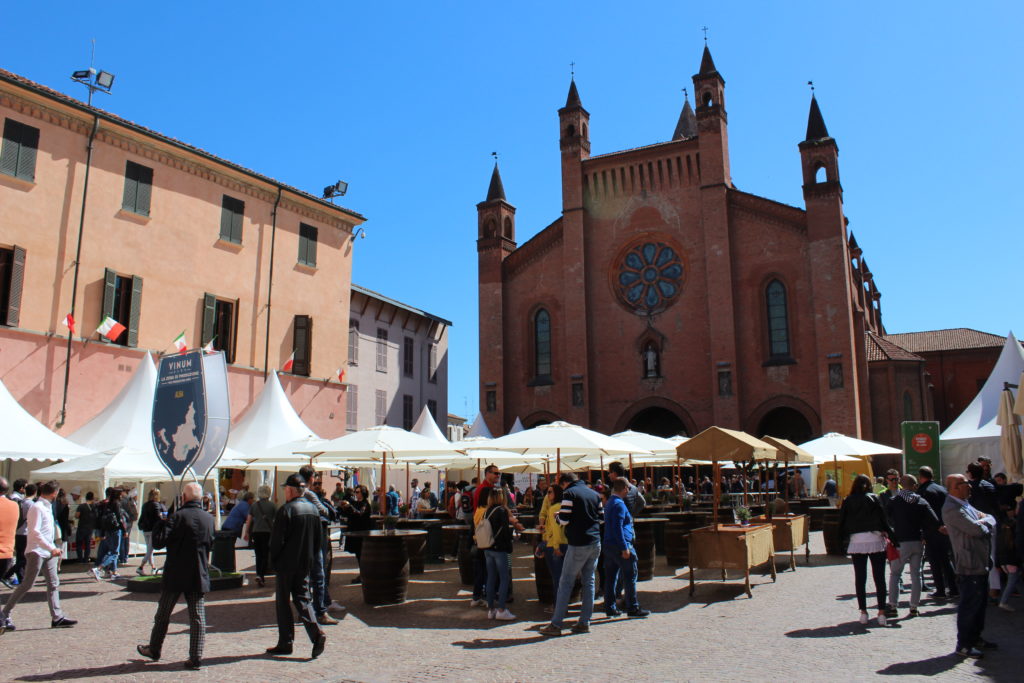
Alba has been the last stop-over of my trip in the Langhe, before go back to Trentino. I didn’t have so much time to explore the city, beacuse the road back to home was very long.
I strolled in the city centre, where the event Vinum was taking place. The event is dedicated to the local wine and food tradition.
I’d love to go back there in autumn to eat truffle of Alba, which is very popular all over the world!
Have you been in the Langhe? Did you like this area?
